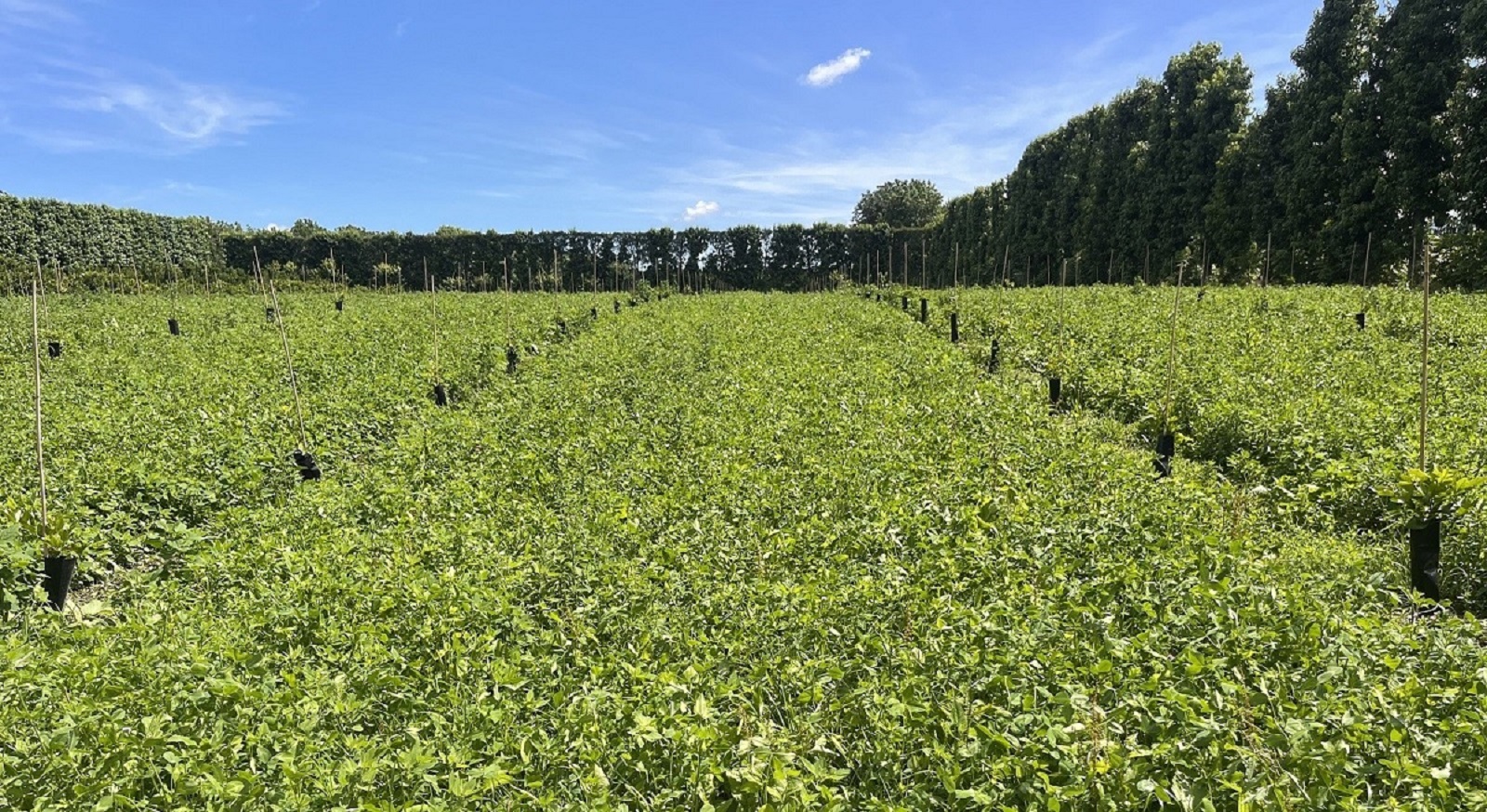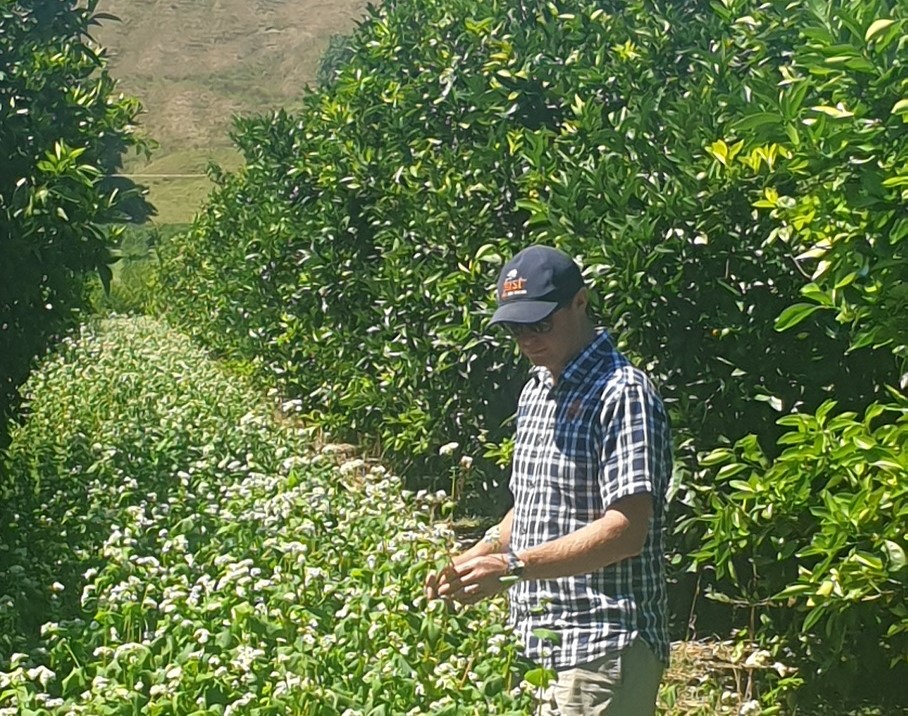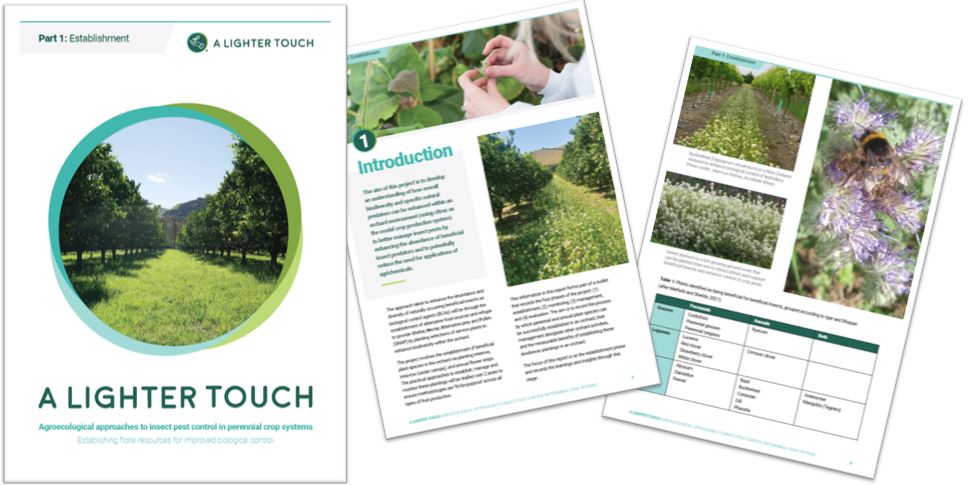Increasing numbers of Gisborne citrus growers are trialling understory planting for both pest management and soil health benefits, following an A Lighter Touch project in the region.
Two Gisborne citrus orchards were the model crop production system for the A Lighter Touch project focusing on biodiverse understory planting in perennial crops. The project aimed to develop an understanding of how overall biodiversity and specific natural enemies could be enhanced to better manage insect pests and to reduce reliance on agrichemicals.
Gisborne has seen a lot of replanting of citrus orchards in the past few years, and many growers who are replanting are establishing an understory between the tree rows, drawing on the plant species mix used in the ALT work, Citrus New Zealand board member Matt Carter says. Matt is also a citrus grower himself and Field Service and New Product Development Manager with grower group First Fresh NZ Ltd.
“The seed cost of the understory mix is quite a bit more than what it would be for just grass clover. But most growers, when you’re putting only a hectare or two in, they’re quite happy to pay that extra for the benefits that they’re getting.”
Matt says growers are seeing the pest management benefits of attracting more beneficial insects, mites and spiders into their orchards, and the understory planting has dual benefits in also improving the soil in the orchard.

A biodiverse understory established alongside plantings of a newly licenced citrus variety, Seedless Eureka Lemons, in Gisborne. Credit: Matt Carter.
“There’s other benefits as well, which we weren’t measuring at the time of the ALT project, but they’ve come to the fore since. Some of the grass species are more clumping, such as cocksfoot and Timothy. When you’re driving your tractor over, you’re less likely to compact it, you’re less likely to push it out because it’s got more of a clump and it holds you up, so that’s good for compaction.
“A lot of the other species selected, such as chicory and plantain, are quite deep tap-rooting as well, so that’s breaking up the soil, it’s allowing nutrients to be released. It’s helping with drainage as well. It’s a whole combination, and that’s without even going into the nutritional side of it, with nitrogen-fixing, and with organic matter going back into the ground as you either crimp it or top it a little bit. It’s quite good organic matter as well.”
A key component of the ALT project was demonstration of the science in commercial orchards, enabling field days for growers to see themselves the practical application of the understory. The value of demonstration was again underscored at a field day in Gisborne in March, where digging soil pits in an understory block, and comparing it to the standard practice, highlighted significant differences.

Matt Carter standing in one of the understories established as part of the ALT citrus project.
“We dug a soil pit next to some trees in the standard block and it just had the old grass, quite a bit of cooch and stuff there, and you could see that the root layer was literally millimeters under the soil.
“Then we dug a pit where we’d put in this particular mix of grasses, chicory, plantain, lucerne and clovers, and the roots were already about half a meter down. This was in an area where the understory was only planted about six months previously, so you could just see how it was changing that soil already just after six months.”
The field day was held on a First Fresh block, where a replant had been done and an understory planted, using the seed mix from the ALT project.
“That was the first time we’d actually dug a pit in two places to compare, and there was a lot of interest from growers. That was only a few weeks ago, but it has sparked more interest with the people requesting the seed mixes and how to do it.”
The ALT project produced three guides to growers focusing on establishing an understory, including details of the seed mix, insect monitoring to inform crop protection decision-making, and management and evaluation of the understory. These resources, as well as videos, and presentations with further detail can all be found on the project page of the ALT website.

Three guides to establishing an understory, insect monitoring, and management and evaluation of an understory are available on the ALT website.
“Of those putting in new blocks, most are asking for that toolkit or for the seed mix, and there’s been quite a lot of new plantings going in. And you can sort of see it around the district where they get up and start flowering and you’ve got the different species in there,” Matt says.
“As an industry, we’ve still got a lot of family growers who want to be doing the right thing with the ground, every grower does really. It’s just been that bit of a step change, especially with new plantings going in. I wouldn’t say it’s quite become the normal, but it’s definitely a lot more open to discussion and a lot of growers are quite happy just to pick up that bit of extra cost and put the understory in and get the benefits from it.”
The ALT project ended in 2023, and the two demonstration orchards were badly affected by Cyclone Gabrielle, wiping out the trees in one block, and flooding the other with silt.
“Citrus NZ has discussed redoing it, but what we’ve found is that we’ve actually got quite a lot of growers that have taken it up anyway, and so at this stage, we’re not pursuing reestablishing the trial. It’s almost gone beyond the trial stage. We’ve proved the concept,” Matt says.